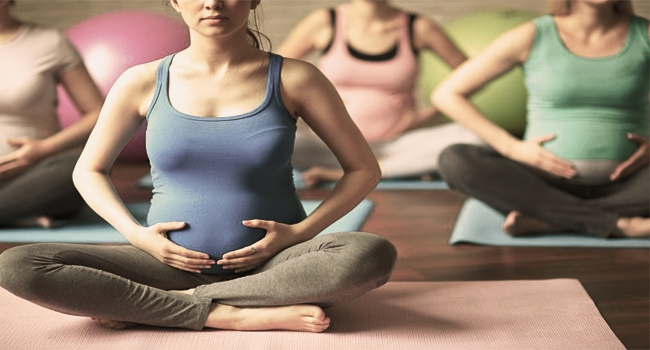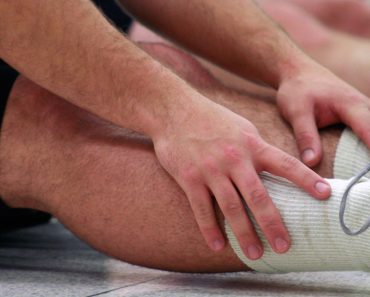
Exercise during pregnancy is not just important, it is essential. It helps mums stay healthy and energized during the pregnancy. It is important for an optimal birth with less likelihood of problems and even helps with a healthier baby. Plus it helps with a healthy recovery and less postnatal issues. This article addresses some of the common prenatal exercise myths.
Myth 1 – When you are pregnant you must stop exercising
Child birth is likely to be the most physically challenging experience of your life. You must physically prepare for that event! Therefore every pregnant mum should be exercising. Scientific research has proven that exercise before birth assists with less problematic births, shorter labors, quicker recoveries, less hip and back pain, less weight gain and healthier birth weights.
Benefits of prenatal exercise:
• Better weight management
• Improved sense of wellbeing
• Improved labor
• Reduced pregnancy complaints
• Shorter recovery
• Improved birth weights
• Baby achieves cognitive milestones quicker
Potential risks if you don’t exercise
• Excessive weight gain
• Gestational diabetes
• Lower back and hip pain
• Low energy and mood
• Varicose veins
Myth 2 – If You Have Not Been Exercising Before You Became Pregnant, You Should Not Start an Exercise Regime.
If you have not been exercising you should start a safe and moderate exercise program.
If you have been exercising
If you have been exercising regularly prior to pregnancy you can continue with your normal exercise – as you feel comfortable. Simply look to reduce the intensity and certain exercises that we shall address shortly.
A balanced approach to prenatal exercise
A prenatal exercise program should include the following components:
• Whole body strength training
• Cardio exercise
• Stability and core exercises
• Stretching
Resistance training can include weight training, body weight exercises and pilates. Swimming, walking and stationery bike are great low impact forms of cardio exercise. Stability work may involve the use of stability equipment such as a fitball or bosu. Yoga is excellent for strength, relaxation and stretching.
Pelvic Floor
The deep abdominals – the core – and pelvic floor are a very important focus of pre-natal programs because it will help with the birth and enhance the recovery of the pelvic floor after birth and minimise possible problems such as incontinence, back and hip pain.
Myth 3 – When you exercise you take blood away from the baby
When you are pregnant there is a 50% increase in blood volume and an increase in heart rate by 20% an increase in cardiac output by 30- 50%. This physiological increase in blood volume and cardiac performance ensures the baby always receives efficient blood flow. Even when exercising, when blood is diverted to the working muscles, there is a very little difference in the blood flow to the baby so it will not be harmed.
What you need to avoid
As common sense would tell you, you need to avoid high impact exercise, heavy weights, isometric work (when muscles are in a state of contraction without movement) and competitive sports. You must also avoid breathe holding and twisting movements in from the late second and third trimester.
Can I run?
You can continue to jog throughout the first trimester and into the early stages of the second trimester. After that you will probably feel too uncomfortable to run due to the growing baby and placenta. Running is obviously not a recommendable prenatal exercise due to the additional weight you carry and the reduced effectiveness of the core to support yourself.
When to stop exercises on your back
It is recommended not to lay on your back from the mid second trimester at around 18-20 weeks. Contrary to common belief, baby will not be harmed however you are likely to feel uncomfortable and sick as a result of baby and the uterus pressing on large blood vessels. Laying exercises can instead be performed on an incline position on fitball or bosu.
When should you stop exercising?
There is no reason, if you have not experienced any pain or complications, why you cannot exercise right up until the birth. Just ensure to exercise moderately, take longer breaks, sip water and not get too hot and listen to your body and avoid over exerting yourself.
Professional guidance
As you will want to take care of yourself and baby it is recommended to do some specific exercise classes or with a suitably qualified professional who can guide you through correct and safe exercises and advise you when to modify exercises, intensity and show you how to perform core exercises correctly.
Exercise summary through your pregnancy
Trimester 1
You can continue with your normal exercise routine but reduce the intensity slightly and start to focus on core and stability exercises.
Trimester 2
As relaxing is released joints and ligaments become slightly lax so avoid sudden changes in direction and complex stability work. Reduce the intensity of workouts as the demand of the pregnancy increases. Avoid laying on your back from week 20.
Trimester 3
Avoid twisting movements, static/bracing exercises and heavy weights. Reduce the intensity of workouts and perhaps the duration. Take longer active rests by walking and breathing between exercises. Switch to passive types of exercise such as walking, swimming and light strength training workouts.





